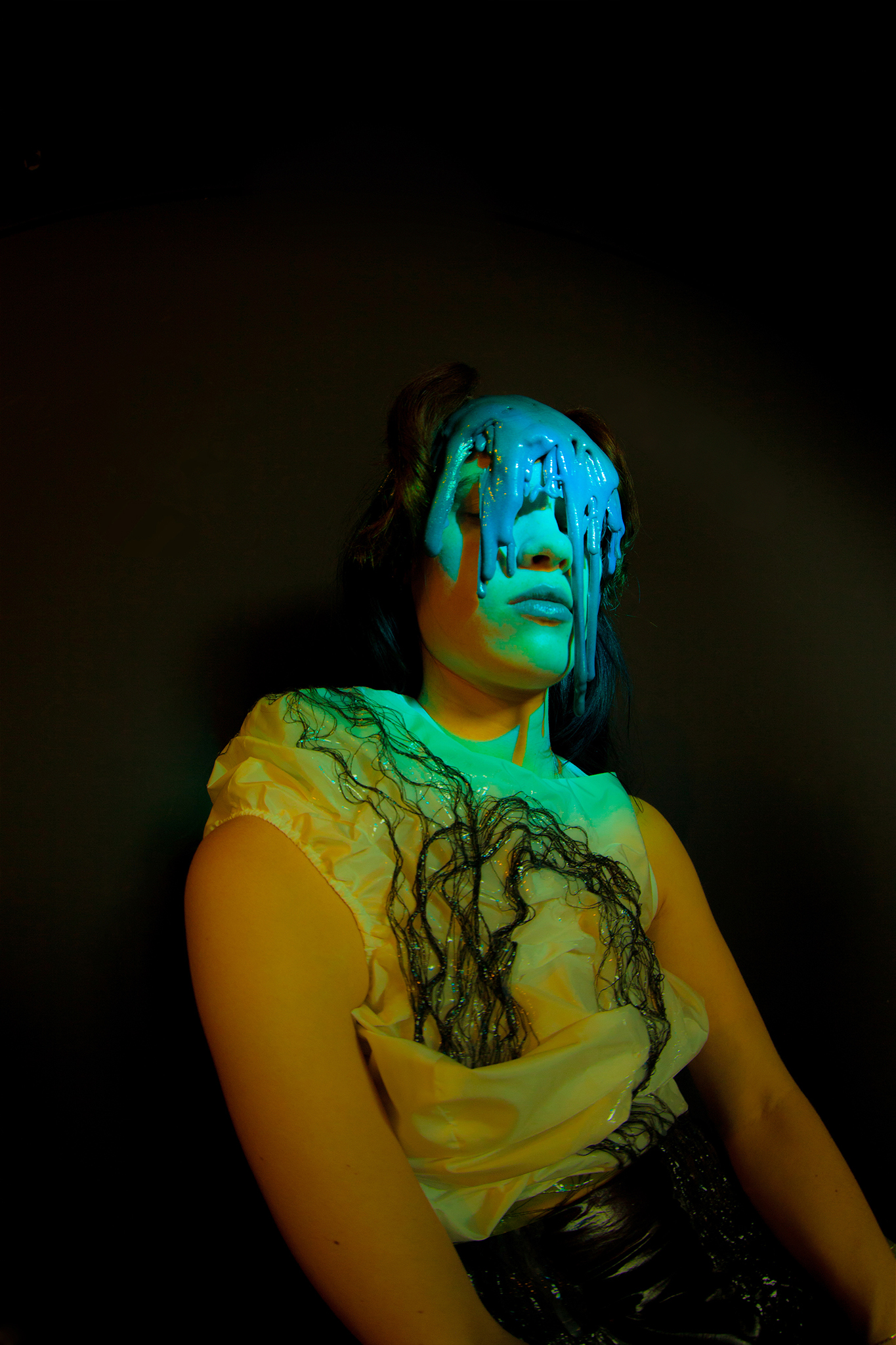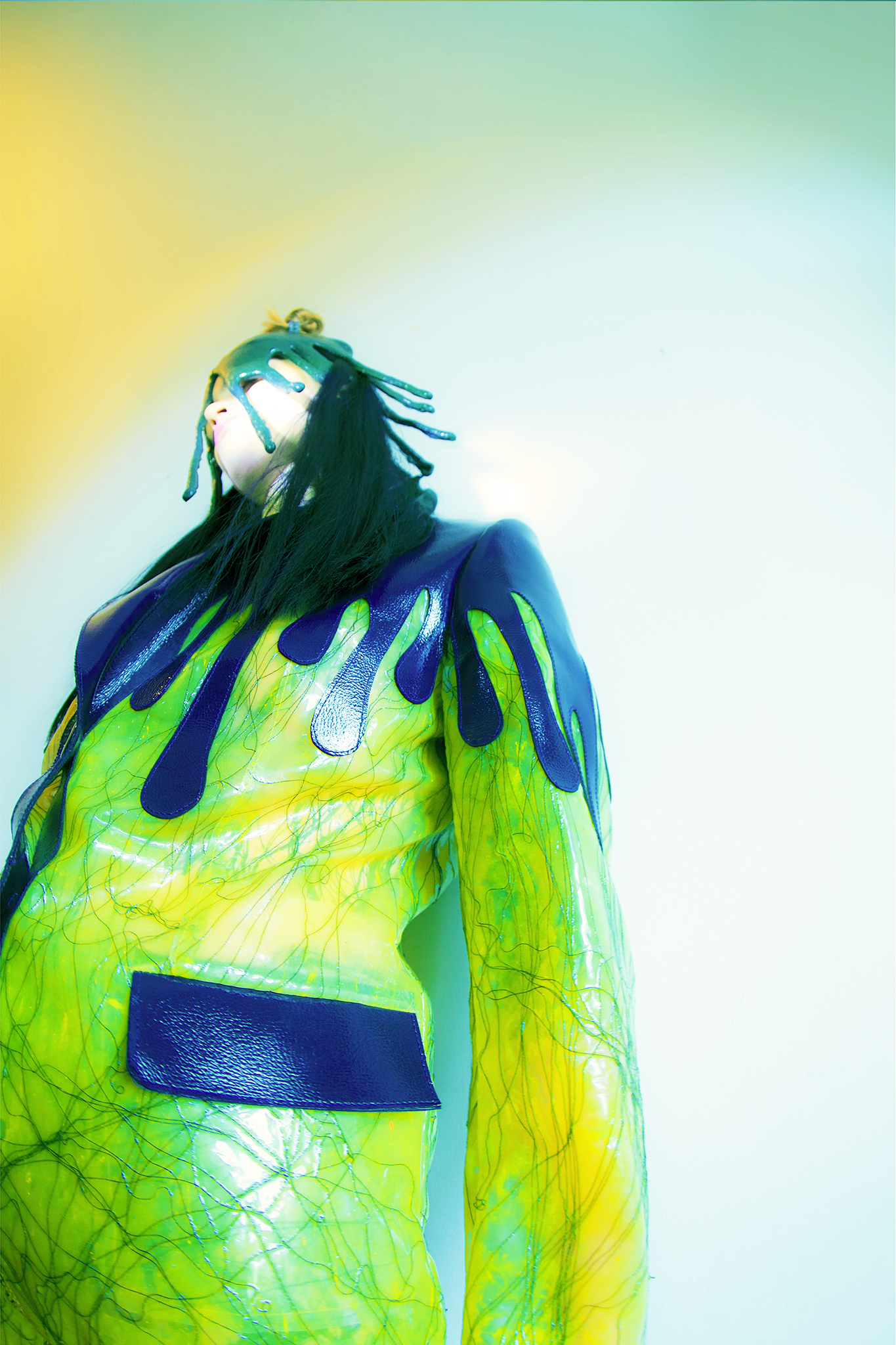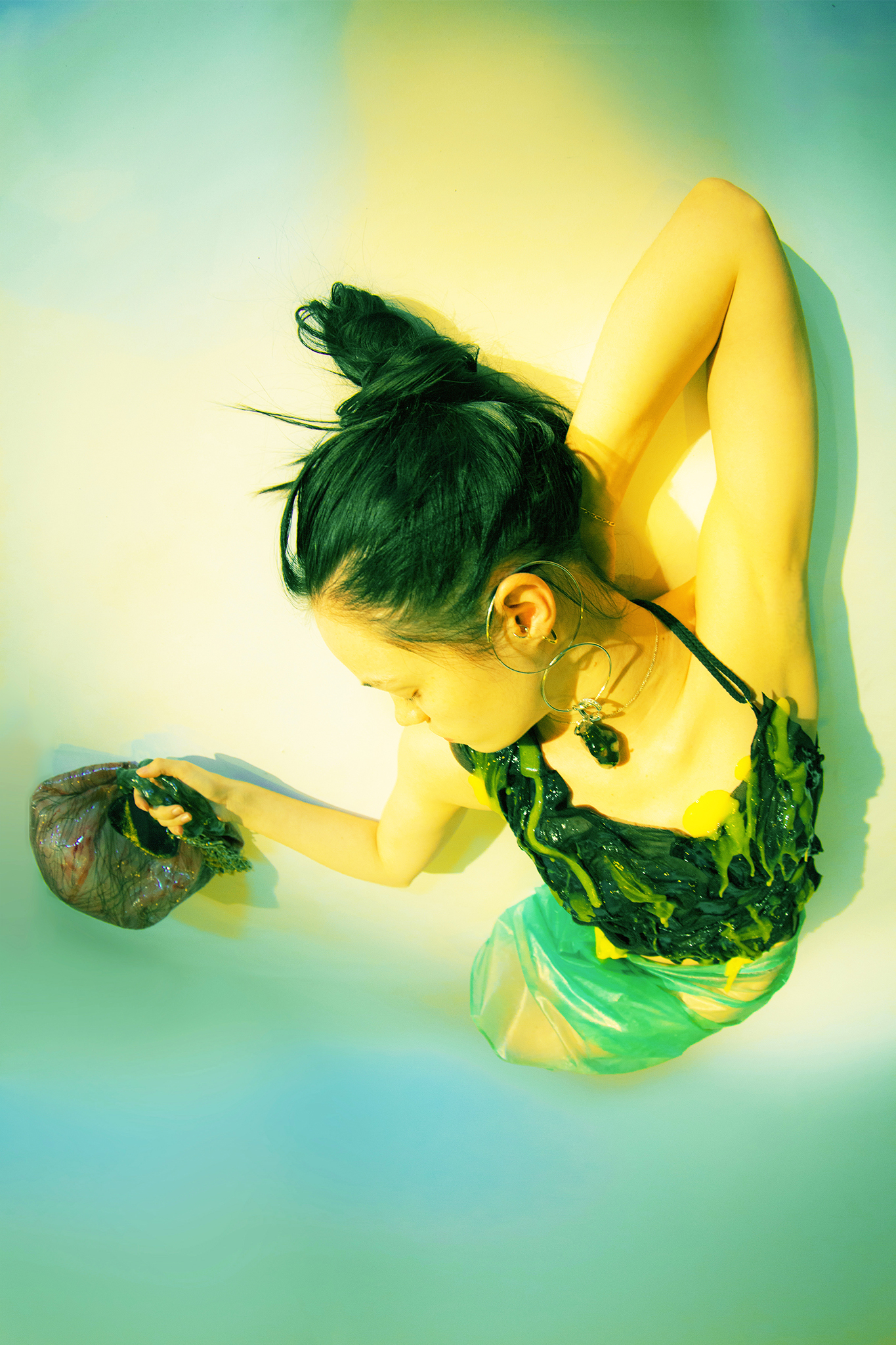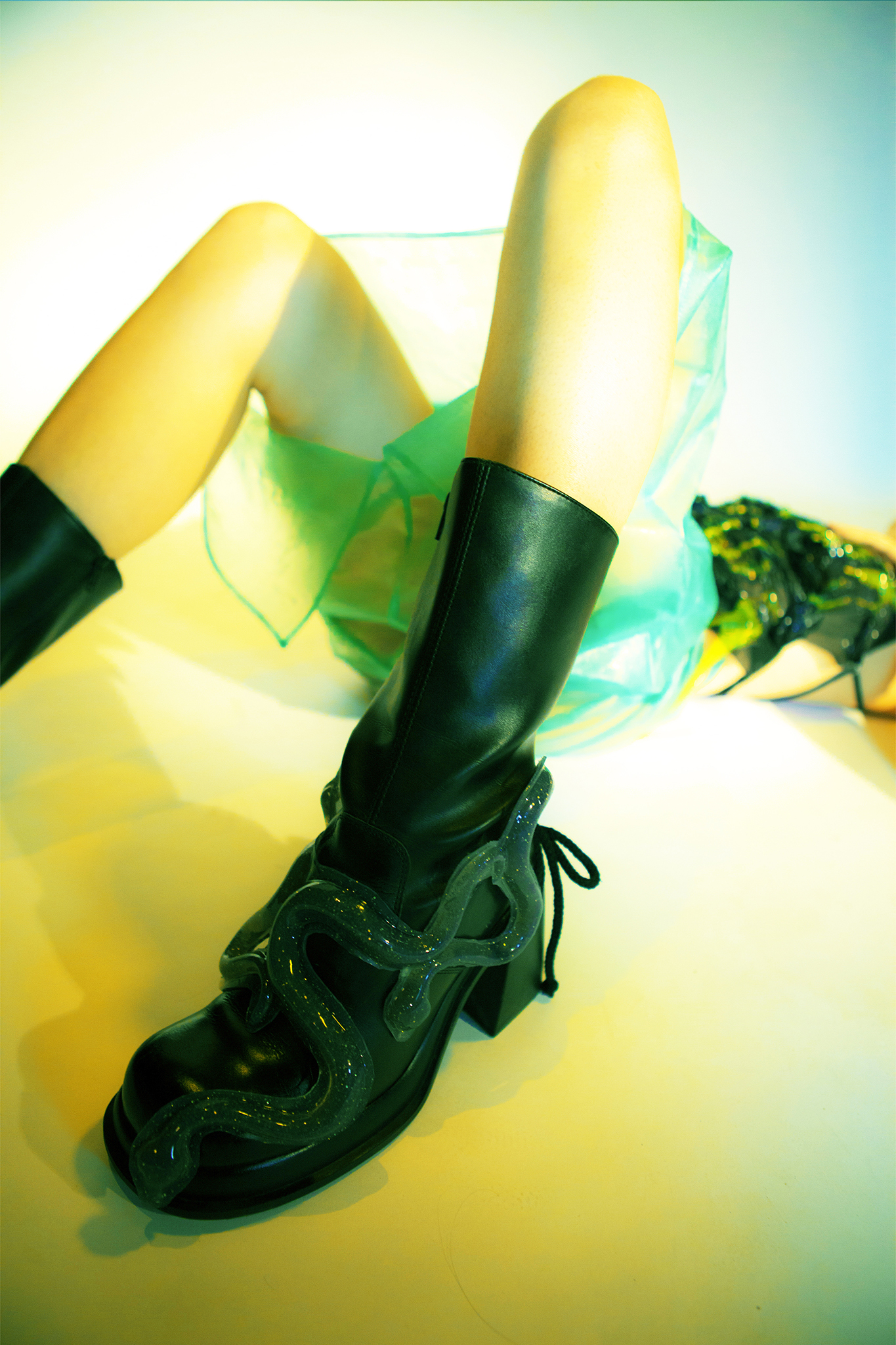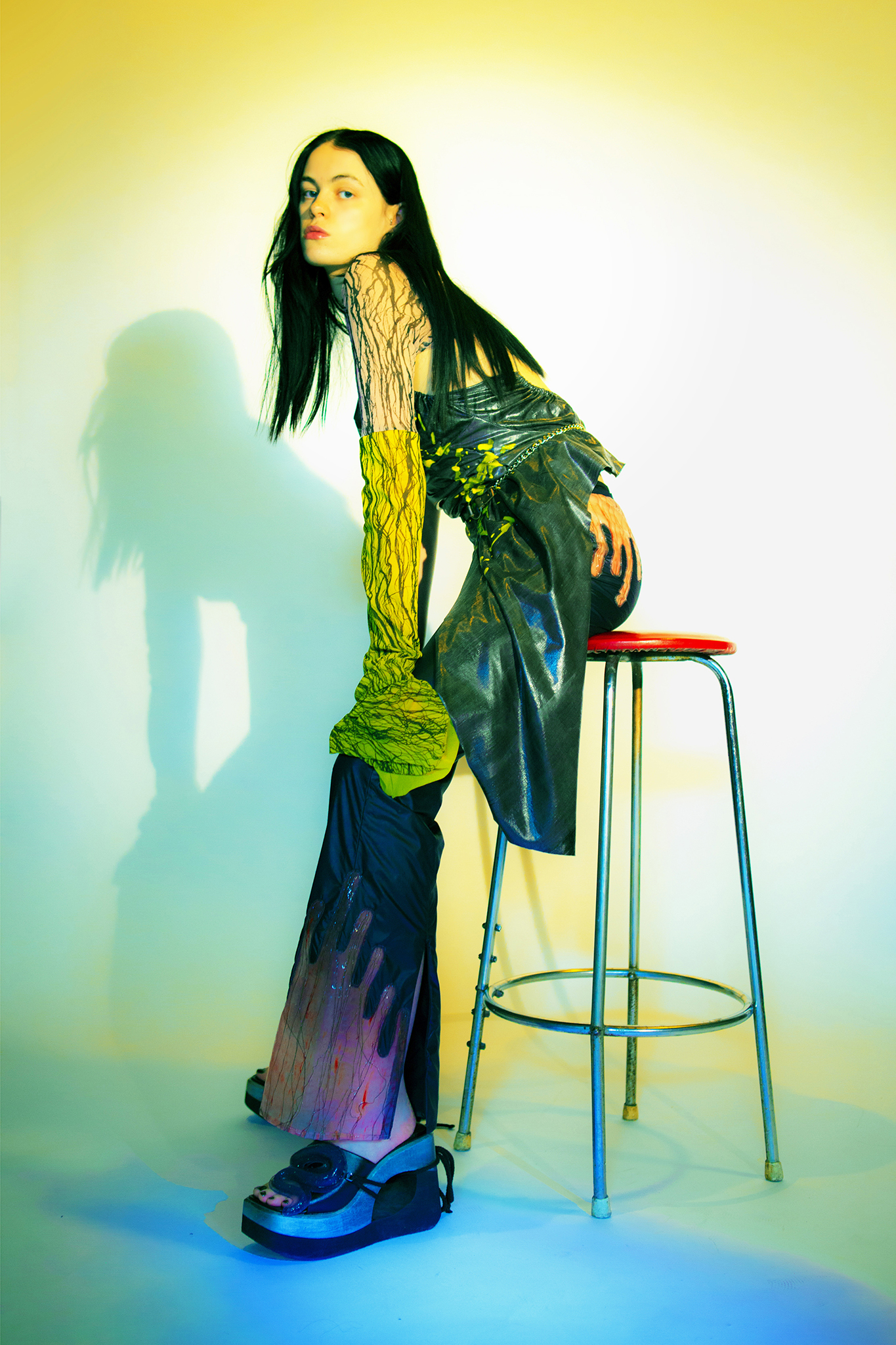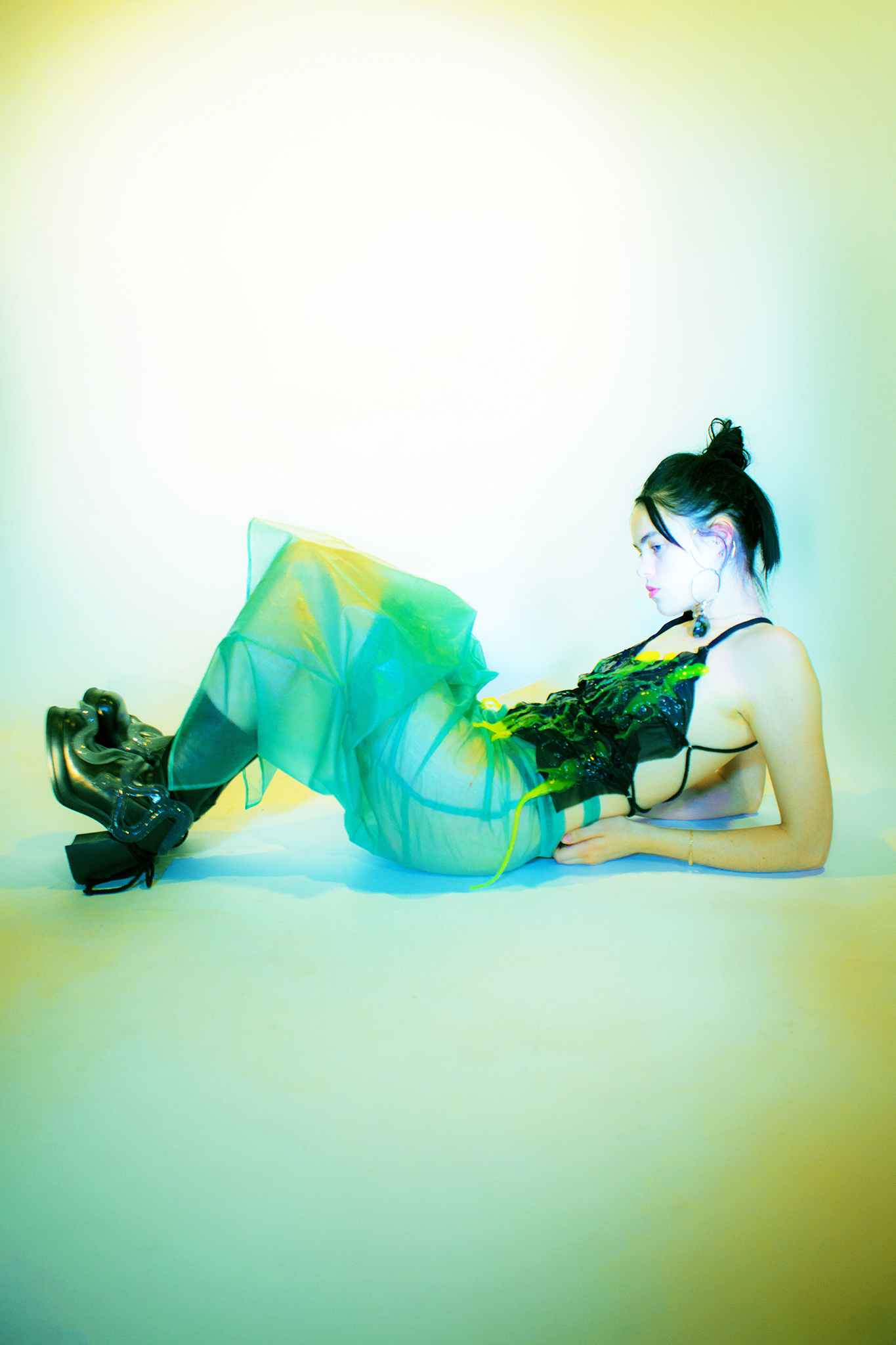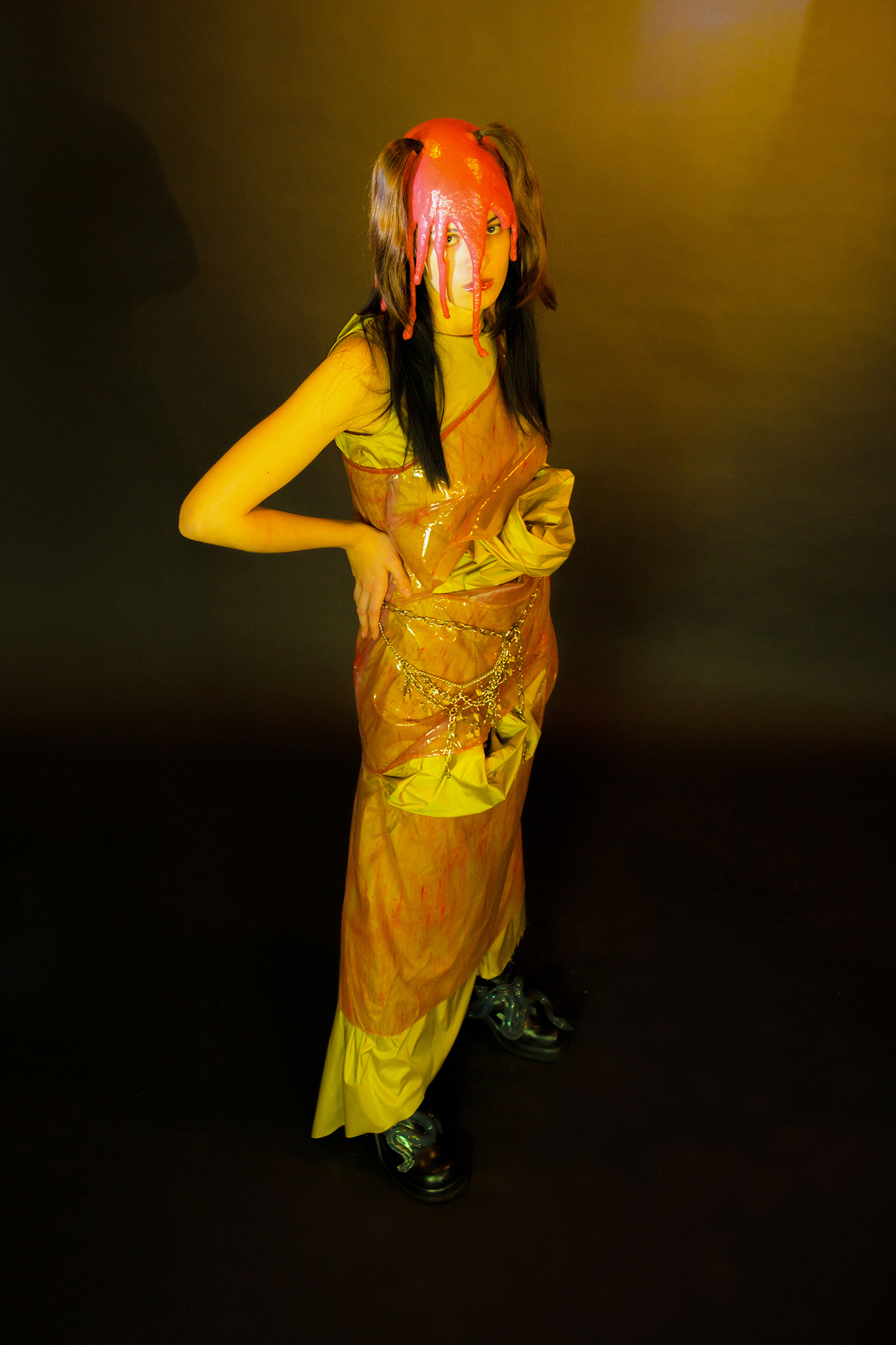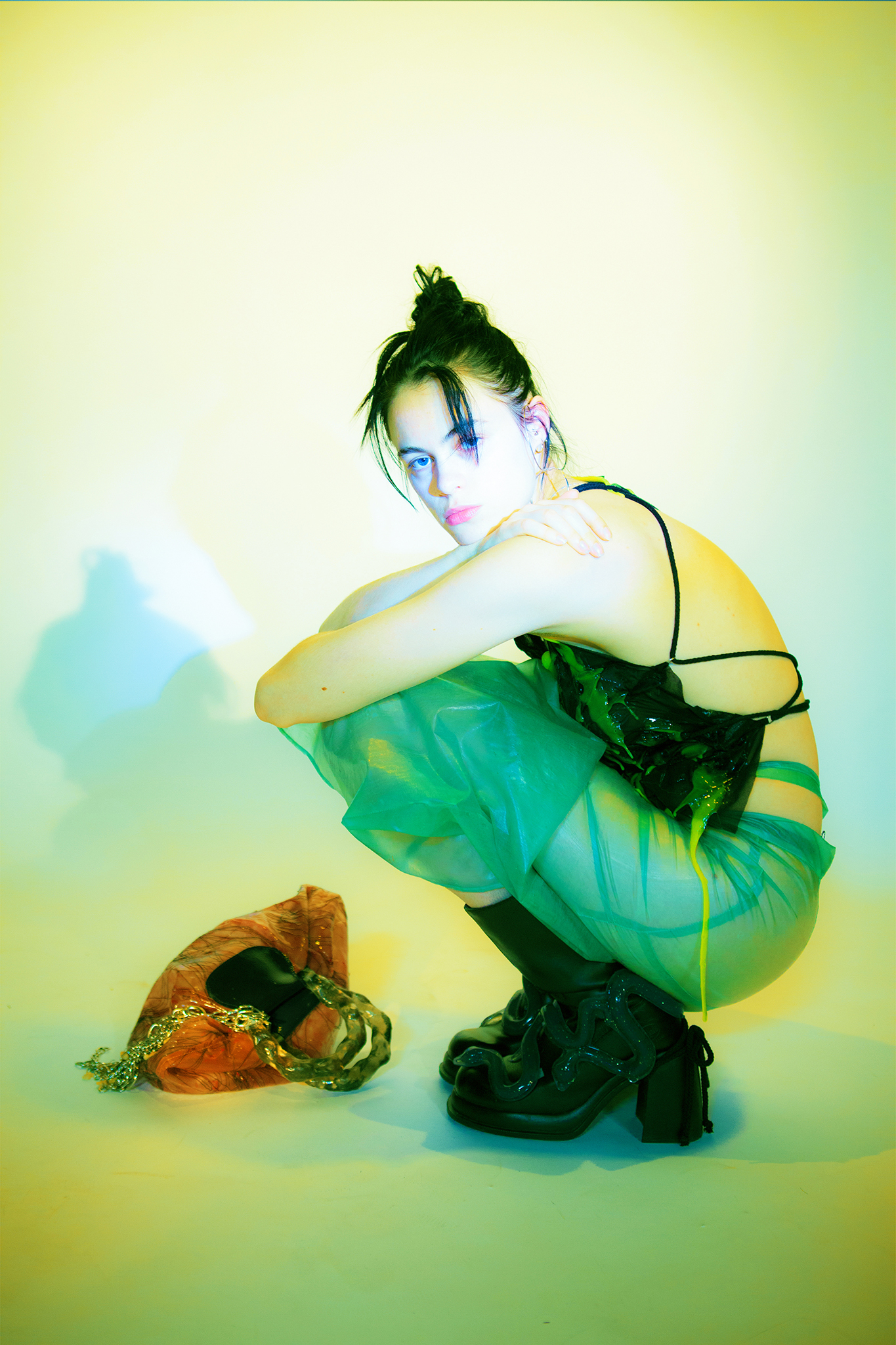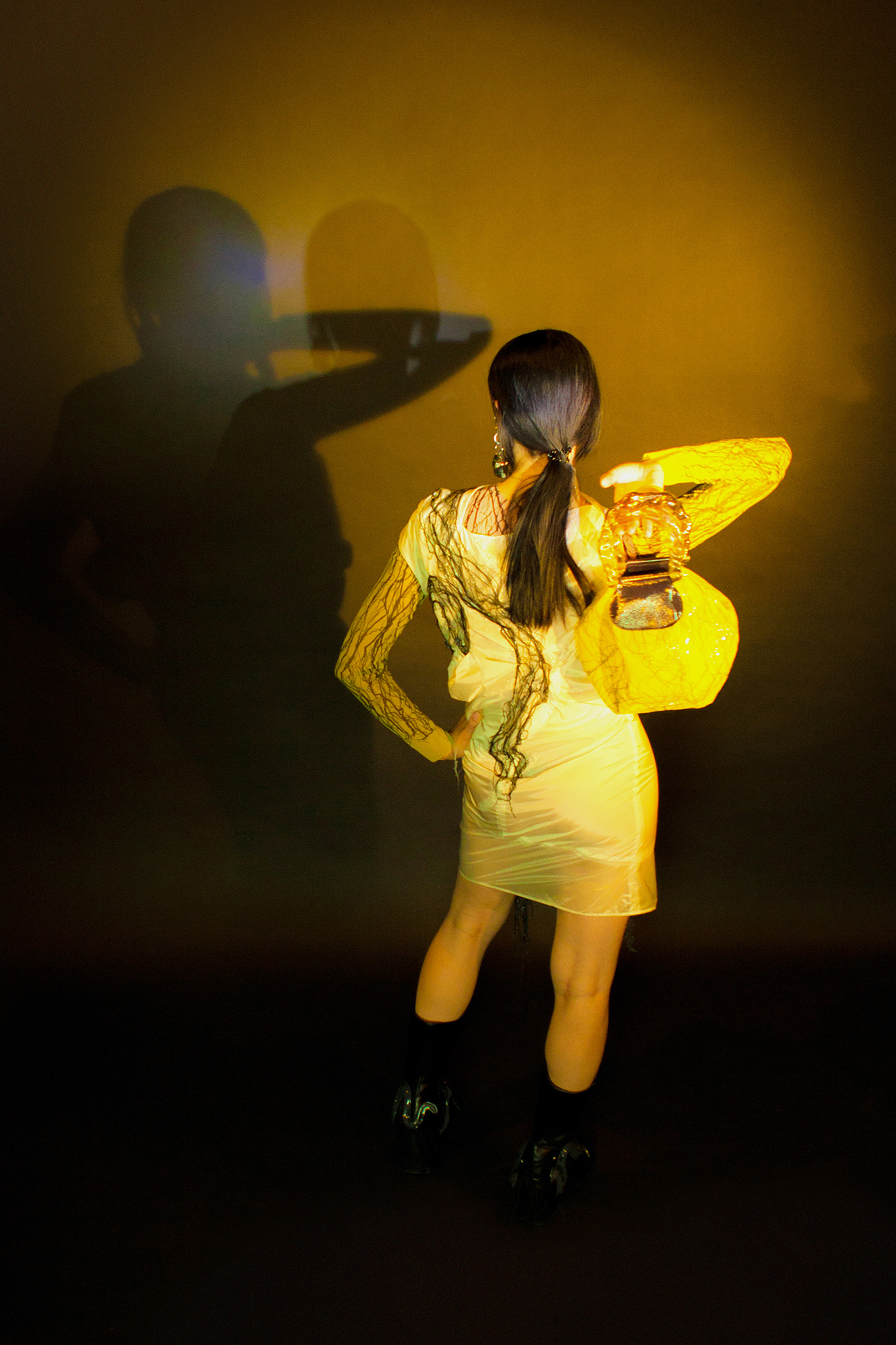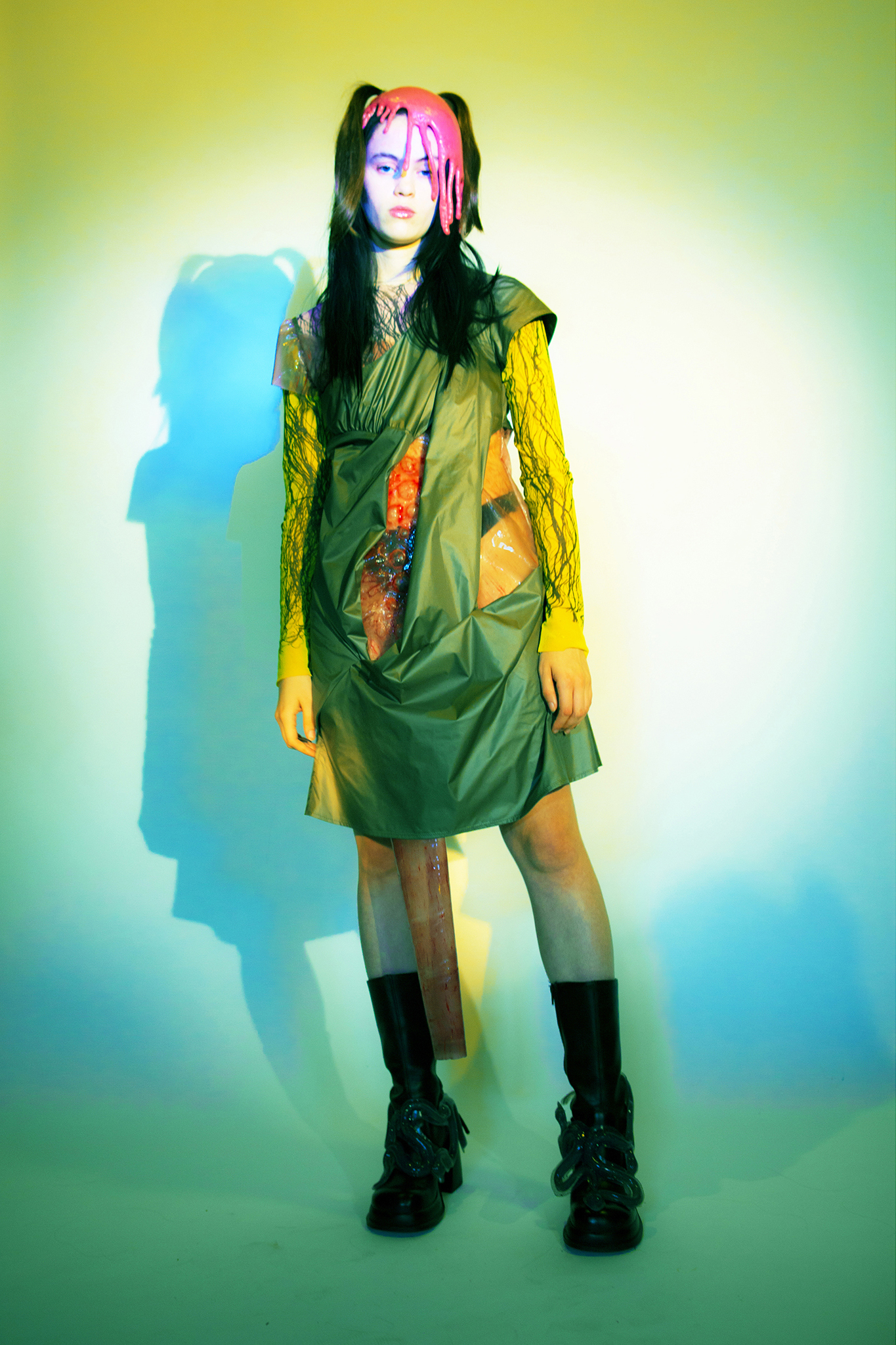FEMOID | Masterarbeit 2019
Schleim als Widerstands Praktik gegen die Beauty Norm
Mich interessieren die Momente, in denen Frauen als ekelerregend, beunruhigend oder bösartig dargestellt werden, mit dem Potenzial Angst und Abschreckung, als auch Faszination und Verehrung zu verursachen. Sowie das unsichtbar machen und das Tabuisieren von Körperfunktionen und Körperflüssigkeiten von Körpern, die allgemein als weiblich definiert werden, wie Stillen, Entbindung und Menstruation, welche im gesellschaftlichen Diskurs weniger bzw. nicht artikuliert werden oder negativ belegt sind.
Mein Projekt erforscht das Angst- und Machtpotenzial der Frau und ihres Körpers im Spannungsfeld zwischen Ekel und Attraktivität. Dabei geht es um die Aneignung und Ästhetisierung des Ekels, der in Form eines beunruhigenden Körpers nutzbar gemacht wird. Es geht um die Aneignung einer vermeintlich hässlichen oder ekelerregenden Ästhetik, bei der die Gleichzeitigkeit von Faszination und Abstoßung eine Rolle spielen, um die Grenzen der eigenen Identitätsdarstellung zu erweichen und zu erweitern.
Den Ausgangspunkt meiner Beobachtungen bilden Eigenschaften, Körperfunktionen und Körperflüssigkeiten, die Unbehagen auslösen – als mystifizierte Urangst. Dieser imaginierte Körper drückt Ängste vor dem Fremden und Unverständlichen aus. Er droht mit Kontrollverlust, dem Schmutz und der Vergänglichkeit und dem Verfall von Werten und Normen. In einer Gesellschaft, die Produkte bewirbt, um Körperflüssigkeiten wie Schweiß, Menstruationsblut und Vaginal Sekrete aufzuhalten und unsichtbar zu machen, in einer Kultur, in der die einzigen bedingt statusfähigen Körperflüssigkeiten Sperma und Tränen sind, bringen Schleim, Schweiß und Blut die Stabilität der Dinge in Gefahr.
Die Kollektion soll ein Tool sein, um das Verhältnis zwischen dem eigenen Körper und der eigenen Identität zu hinterfragen – durch die Dekonstruktion von fiktiven Rollenbildern und der Provokation und Irritation des Betrachters, mit Hilfe der Ästhetisierung von Groteskem und Ekligem.
Es ist der Versuch sich einem fluiden Körperbild anzunähern, einem Körperbild in dem Anomalien, innere Prozesse und Körperfunktionen eine Daseinsberechtigung finden, als ästhetische Mutation die das Innere nach Außen kehrt.
Slime as resistance practice against the beauty norm
I am interested in the moments when women are portrayed as disgusting, disturbing or malicious, with the potential to create fear and deterrence, as well as fascination and reverence. As well as the moments in which bodily functions and bodily fluids of bodies that are generally defined as female, are beeing made invisible or tabood, such as breast- feeding, childbirth and menstruation, which are less or not articulated or negatively documented in social discourse.
My project explores the fear and power potential of women and their bodies in the field of tension between disgust and attractiveness. It deals with the appropriation and aestheticization of disgust, which is made usable in the form of a disturbing body. It is about the appropriation of a supposedly ugly or disgusting aesthetic, in which the simultaneity of fascination and rejection play a role, in order to soften and expand the boundaries of one’s own representation of identity.
The starting point of my observations are properties, bodily functions and bodily fluids that cause discomfort – as mystified primal fear. This imagined body expresses fears of the foreign and the incomprehensible. It threatens with loss of control, dirt and the transience and decay of values and norms. In a society that promotes products to stop and make body fluids invisible such as sweat, menstrual blood and vaginal secretions, in a culture in which the only conditionally statusable body fluids are sperm and tears, slime, sweat and blood endanger the stability of things.
The collection is intended to be a tool for questioning the relationship between one’s own body and one’s own identity – through the deconstruction of fictitious role models and the provocation and irritation of the viewer, with the help of the aestheticization of the grotesque and the disgusting.
It is an attempt to approach a fluid body image, a body image in which anomalies, inner processes and body functions find a reason for existence in order to free oneself from a static, restrictive body image.
It is an attempt to approach a fluid body image, a body image in which anomalies, inner processes and body functions find a ground for existence, as an aesthetic mutation that turns the inside out.
Prozess


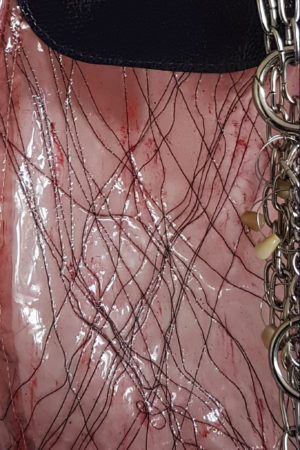


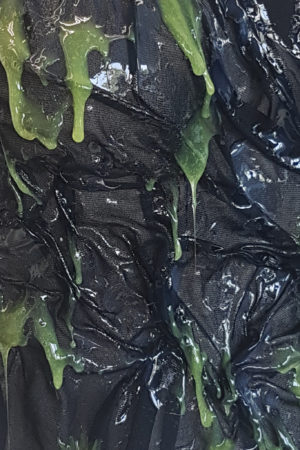
Betreuer:
L. Paschke & I. Harms
